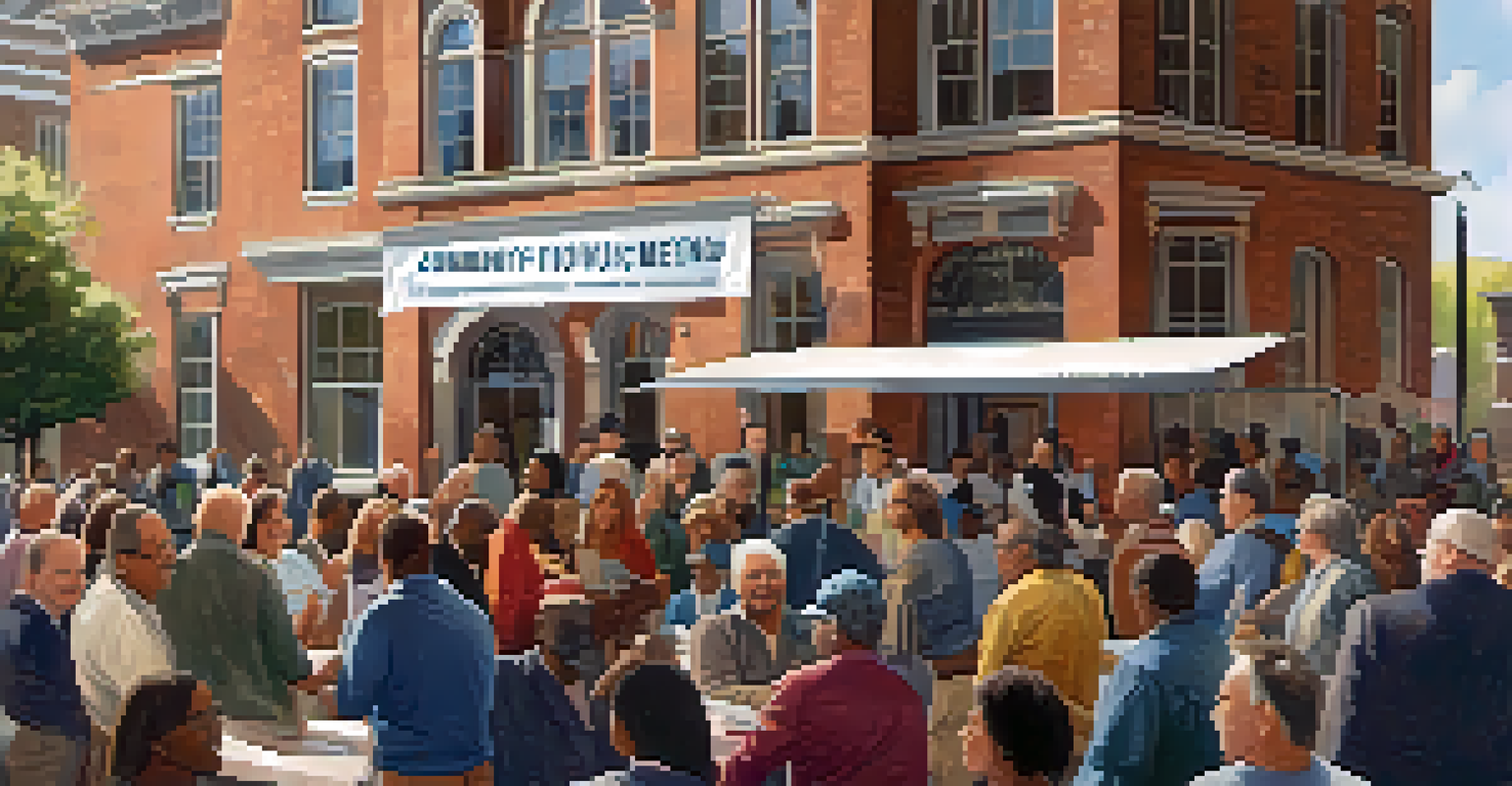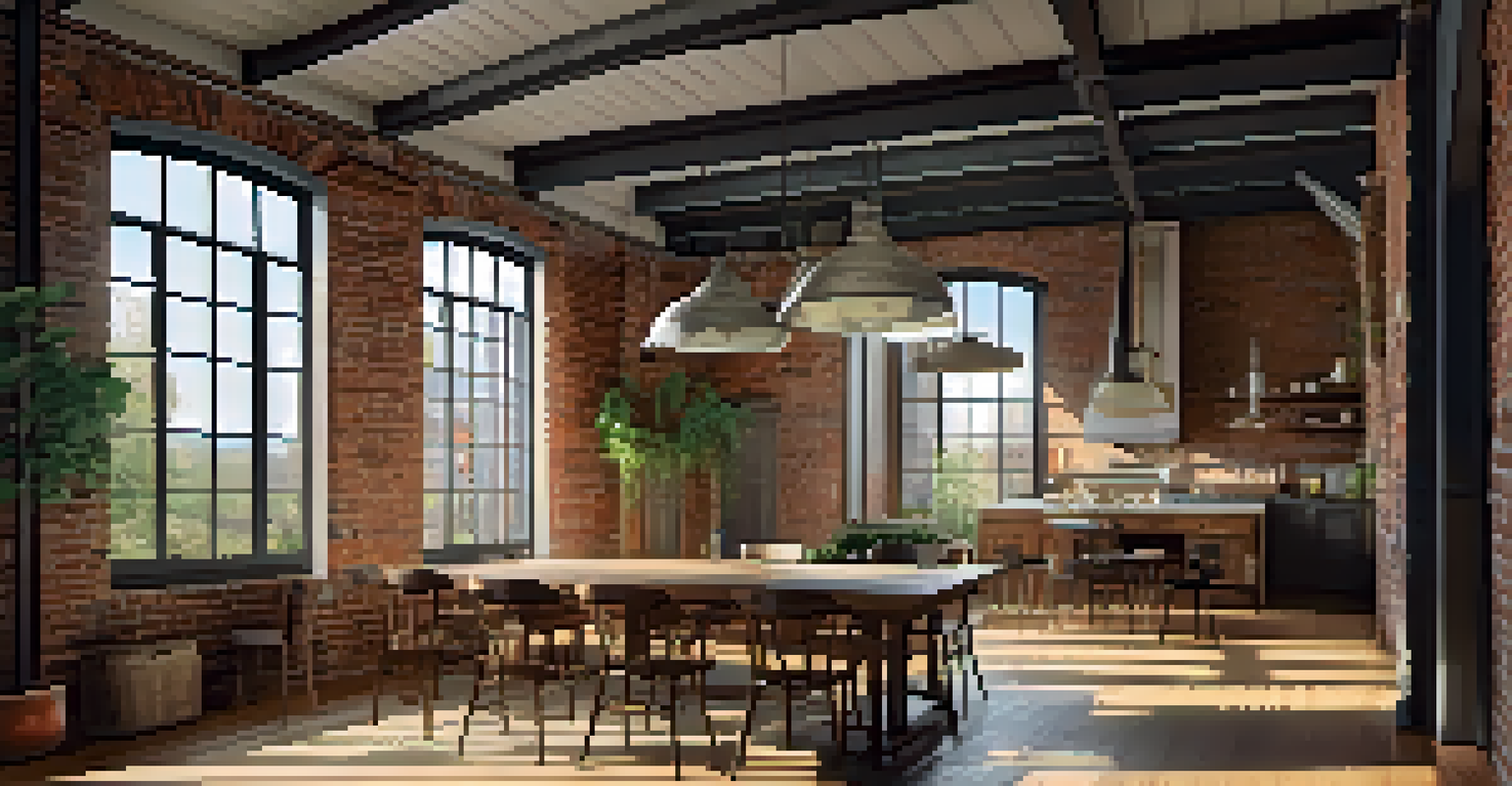The Challenges of Renovating Historic Properties in Urban Areas

Understanding the Value of Historic Properties
Historic properties are more than just buildings; they hold stories and memories of the past. Their architectural features often reflect the time they were built, offering a glimpse into the cultural heritage of an area. Preserving these properties not only maintains their character but also enriches the urban landscape, attracting tourism and fostering community pride.
Preservation is a form of humility; it acknowledges that we are part of a continuum and that our actions today will shape the future.
However, this value comes with challenges. Renovators must navigate strict regulations and guidelines aimed at protecting these historical sites. This often means that modern renovations must blend seamlessly with original features, which can complicate design choices and increase costs.
Ultimately, understanding the importance of these properties sets the stage for thoughtful renovations. It encourages a mindset that values preservation while also addressing the need for modern functionality and comfort.
Navigating Regulations and Permitting Processes
One of the most daunting challenges in renovating historic properties is dealing with local regulations. Many cities have strict zoning laws and preservation guidelines that dictate what can and cannot be changed. This ensures that renovations respect the building's historic fabric but can also slow down the project timeline significantly.

Obtaining the necessary permits can be a lengthy process, filled with paperwork and approvals from various city departments. Renovators often find themselves in a bureaucratic maze, where one misstep can lead to costly delays or even fines. It’s essential to work closely with local preservation boards to ensure compliance and avoid pitfalls.
Value of Historic Properties
Historic properties embody cultural heritage and stories, making their preservation vital for community pride and tourism.
Being proactive in understanding and addressing these regulations from the start can save both time and headaches. Engaging with experts who know the local landscape can streamline the process, making it less overwhelming.
Balancing Modern Needs with Historical Integrity
When renovating a historic property, finding the right balance between modern amenities and historical integrity is crucial. While today’s homeowners often seek open floor plans and updated kitchens, these changes can clash with a building's original style. Careful consideration is required to ensure that any updates enhance rather than detract from the property’s historic charm.
The past is never dead. It's not even past.
One effective approach is to incorporate modern conveniences in a way that respects the existing architecture. For instance, using period-appropriate materials or design elements can help bridge the gap between old and new. This not only satisfies contemporary needs but also honors the building's heritage.
Ultimately, the goal is to create a space that feels both functional and authentic. This can lead to a more satisfying living experience while maintaining the unique character that makes these properties so special.
Financial Challenges and Budgeting for Renovations
Renovating historic properties can be financially challenging, often requiring a larger budget than anticipated. The cost of restoring original features, such as moldings or windows, can quickly add up, especially when those elements need specialized craftsmanship. Additionally, unforeseen issues like structural damage can arise, further stretching budgets.
To combat these financial hurdles, it’s essential to develop a comprehensive budget that accounts for both expected and unexpected expenses. Including a contingency fund can provide a buffer for surprise costs. Additionally, seeking out grants or tax credits designed for historic preservation can help alleviate some of the financial burdens.
Navigating Renovation Challenges
Renovators face stringent regulations and financial hurdles, requiring careful planning and expert guidance to ensure compliance and budget management.
Planning and flexibility are key components in navigating the financial landscape of a historic renovation. By being prepared for the realities of the process, renovators can make informed decisions that keep their projects on track.
Community Involvement and Stakeholder Engagement
Engaging with the community is a vital aspect of renovating historic properties. These buildings often hold significant cultural value to local residents, and their input can guide renovations towards outcomes that reflect community interests. Organizing public meetings or forums can foster open dialogue and build support for the project.
Involving local stakeholders, such as neighborhood associations or historical societies, can also provide valuable insights. Their knowledge of the property’s history and its connection to the community can help ensure that renovations are both respectful and relevant. This collaborative approach can lead to a sense of ownership and pride in the finished project.
Ultimately, community involvement enriches the renovation process, transforming it from a mere construction project into a collective effort that honors the past while looking toward the future.
The Role of Technology in Historic Renovations
Technology plays a pivotal role in the renovation of historic properties, offering tools that enhance both preservation and efficiency. For instance, advanced scanning technology can help create accurate models of existing structures, making it easier to plan renovations that respect original designs. This can be especially beneficial when working with complex architectural features that require precision.
Moreover, technology can assist in sourcing materials that match the historical character of the building. Online databases and restoration networks provide access to suppliers who specialize in period-appropriate materials, ensuring that renovations maintain authenticity.
Community Engagement Matters
Involving the local community and stakeholders in renovations fosters support and ensures that the projects respect the property's historical significance.
Embracing technology doesn’t mean sacrificing historical integrity; rather, it can serve as a bridge to modernize outdated aspects while preserving the essence of the property. It’s about using innovative solutions to honor the past in a contemporary context.
Success Stories: Learning from Successful Renovations
Looking to successful historic renovations can provide valuable lessons and inspiration. For instance, the transformation of the Ferry Building in San Francisco showcases how thoughtful renovation can breathe new life into a historic structure. By maintaining its architectural integrity while adding modern amenities, it has become a vibrant hub of activity.
Another example is the rehabilitation of the High Line in New York City. This former railway line was creatively repurposed into an elevated park, celebrating its industrial history while providing a new public space. Such projects highlight the potential of historic renovations to serve contemporary needs without erasing the past.

These success stories remind us that with careful planning, community involvement, and a commitment to preservation, historic properties can thrive in urban environments. They serve as beacons of what is possible when we respect the past while embracing the future.